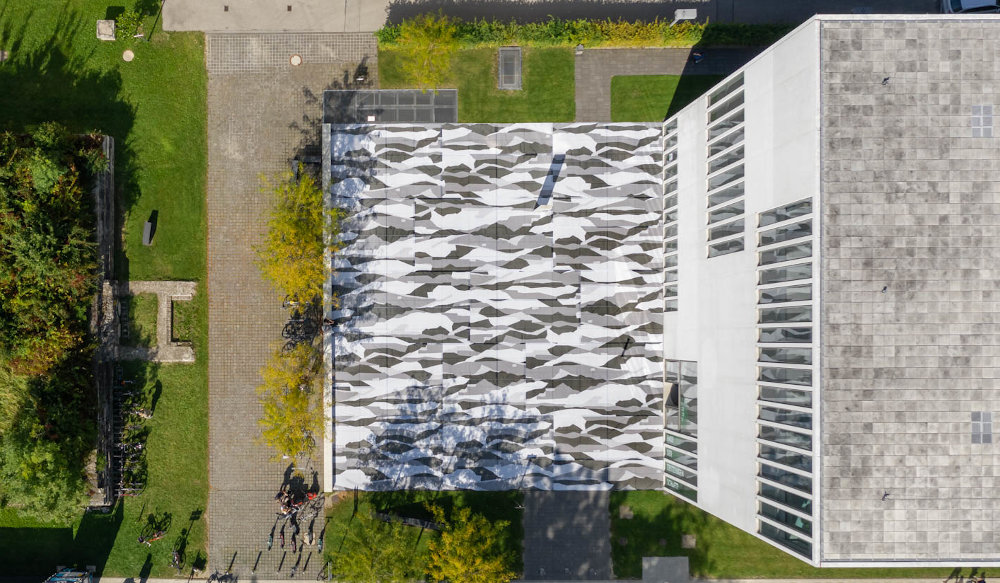In this work, specially conceived for the site, Nicolai will use a camouflage pattern to make the place where the “Brown House” was located until the end of the war (now Max-Mannheimer- Platz) apparently disappear. He will thus engage in a complex restaging of the site’s momentous history and set it in a broader, supralocal context. Referencing the work of Oskar Schlemmer (1888–1943), the installation thus addresses the conditions for art and artists under a dictatorship.
For the camouflage motif Olaf Nicolai uses a design Schlemmer made in 1941. Having taught at the Bauhaus from 1921 and 1929 as a “master of form ,” Schlemmer was summarily dismissed in 1933 and was no longer officially allowed to be active as an artist. He therefore worked instead for a painting firm in Stuttgart. His works were ridiculed as “degenerate,” whitewashed, and removed from museums. He moved with his family to the provinces where, defamed and marginalized, he tried to eek out an existence as an agricultural laborer and commission painter. The few works dating from this period show the extent to which he had to sacrifice the ideals of the avantgarde to the ideological constraints of the Nazi regime. The camouflage design for the Stuttgart gasometer dates from this period. To protect it from air raids, Schlemmer projected an abstract form of the hilly landscape of the Black Forest onto the building in order to make it blend in with the background. The abstract pattern echoes the radical modernity of the Bauhaus. However, this design was made not with art in mind but for a pragmatic purpose. Schlemmer had ceased creating functional and aesthetic spaces and instead was now designing innovative camouflages for militarily strategic objects. The ostensibly idealistic connection between artistic genres and a progressive view of the world propagated by the Bauhaus only a few years earlier was now paradoxically reversed into innovative artistic design in the service of war.
Olaf Nicolai transplants his variation of this camouflage motif to the place where, until 1945, the headquarters of the NSDAP—the Nazi Party—were located. The headquarters were established in 1930 in no small part with the help of donations from Munich’s bourgeoisie. The Party quarter around Königsplatz with its monumental buildings erected from 1933 onwards served as a showcase for Nazi power and as a backdrop for the regime’s propaganda parades and state receptions. Only a short time later, however, the area had to be camouflaged from Allied bombing with nets, artificial bushes, and fake roofs. After World War II, the site was once again “rendered invisible.” The damaged “Brown House” was dismantled, the “Temples of Honour” detonated, and the remaining plinths on which they had stood planted. Over the years, they disappeared under the vegetation. In 1987, the granite slabs with which Königsplatz had been paved during the Nazi-era were removed in their entirety. Today, continual efforts are required to make the history of the place visible.
The temporary art project Oskar: A Camouflage by Olaf Nicolai references these historical events and at the same time addresses questions of the ambivalent relationship between the language of artistic form and politics and ideology in a contemporary context.


